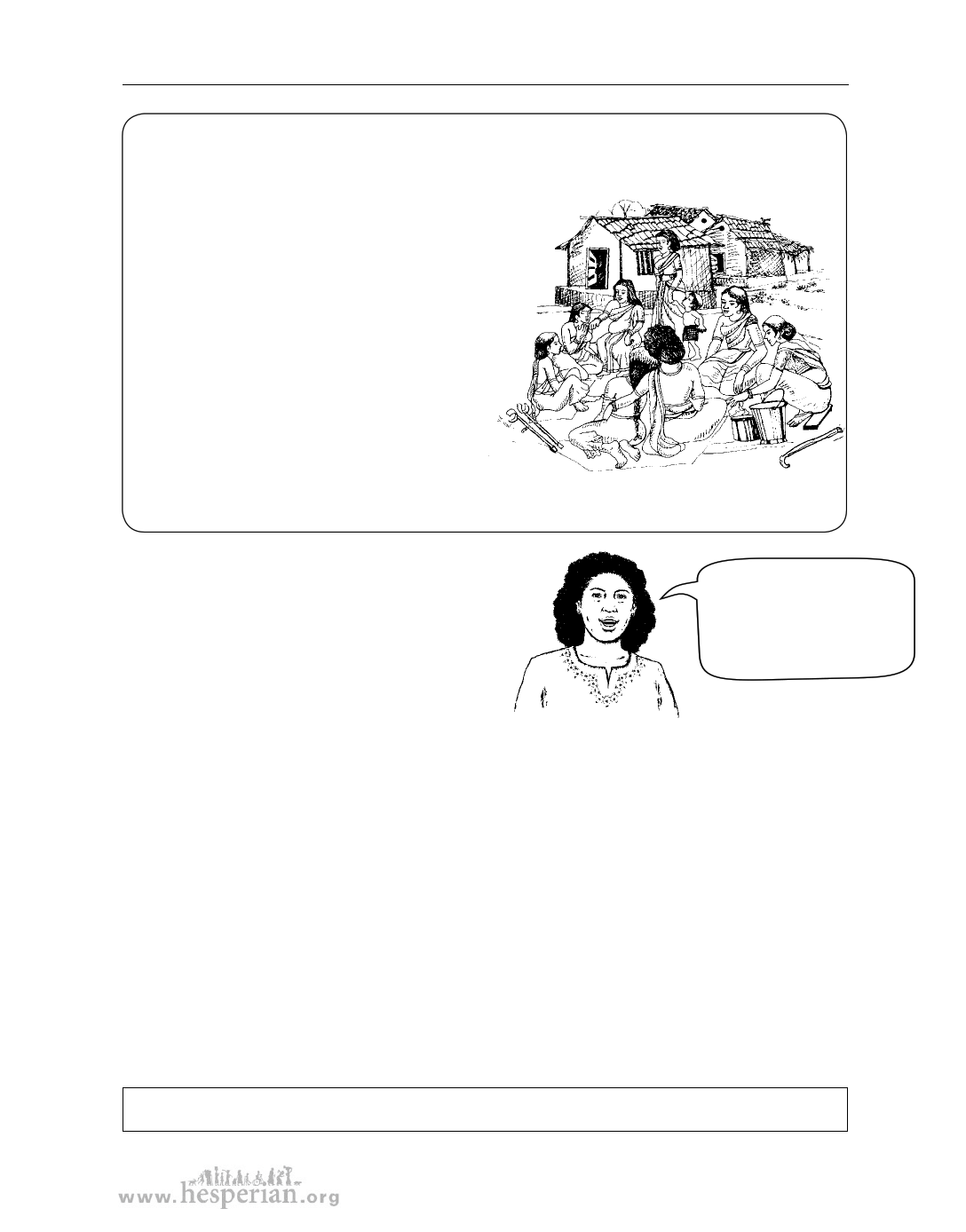
Working for change 155
Disabled women in our community have been coming together to
empower ourselves as women. Together, we are finding ways to express our
femininity and sexuality. Some of us
wear flowers in our hair or a bindi on
our forehead. Sometimes we decorate
our hands and feet with intricate
henna patterns, wear anklets and
jewelry, or have a ritual oil bath. All
these things have helped us explore
our sexuality and feel good about
our bodies. We are learning to see
ourselves as the kind of women we
want to become.
— A group of women with disabilities
from Tamil Nadu, India
What families and caregivers can do
• Treat a girl with a disability the same
way other children are treated. This
will help her grow up feeling good
about herself, her body, and her
feelings. When she grows up, it will
be easier for her to have a loving,
respectful relationship with her partner.
Make sure women and
girls with disabilities
have the same chances
to develop a full social
life.
• Support a girl during her teenage years when she is changing from a girl to
a woman. If a girl with a disability gets good information about sexuality, is
allowed to make herself look attractive, and does not face discrimination about
the way she looks, she will feel good about her body and her sexuality, and her
self-esteem will grow strong.
• Make sure girls and women with disabilities are included in talks and
ceremonies about sexuality and womanhood.
• Support women with disabilities in their decisions about potential spouses and
loving partners.
• Do not arrange marriages for a disabled woman if the husband or the family
expects extra money or presents to “make up for” the woman’s disability.
• Encourage people in the community to see women with disabilities as women
first, with the same sexual needs as all women, and to treat them with respect.
It is normal for all people to want loving relationships. A woman with a disability is no different.
A Health Handbook for Women with Disabilities 2007